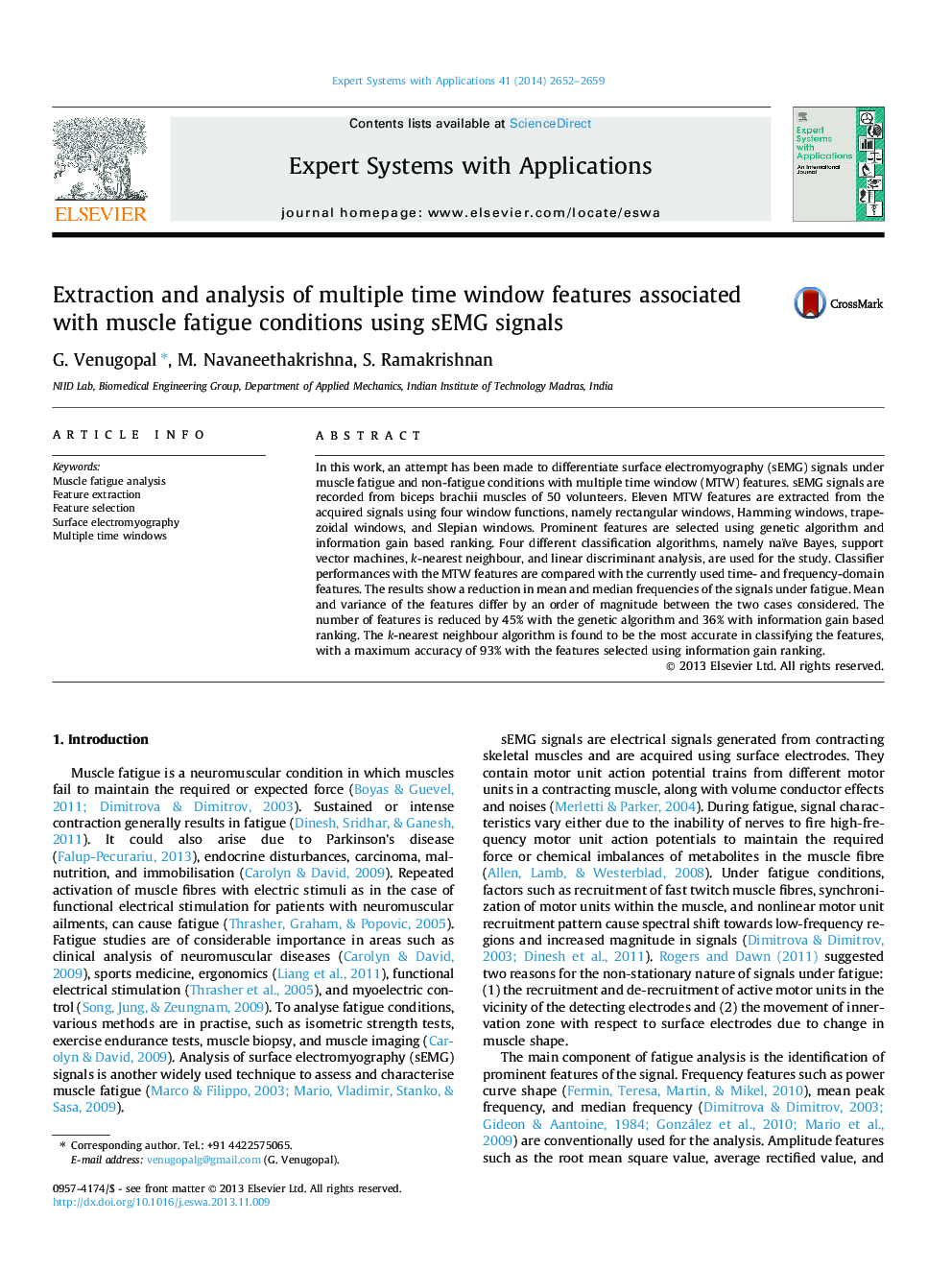| کد مقاله | کد نشریه | سال انتشار | مقاله انگلیسی | نسخه تمام متن |
|---|---|---|---|---|
| 383984 | 660838 | 2014 | 8 صفحه PDF | دانلود رایگان |

• Applicability of MTW features in muscle fatigue analysis is studied.
• sEMG signals under fatigue and non-fatigue conditions are recorded and are found to be distinguishable.
• The features represent non-stationary and time-dependant energy variations of sEMG signals associated with fatigue.
• Feature values are distinct in both the conditions.
• MTW features provides better classification accuracy than currently employed time and frequency domain features.
In this work, an attempt has been made to differentiate surface electromyography (sEMG) signals under muscle fatigue and non-fatigue conditions with multiple time window (MTW) features. sEMG signals are recorded from biceps brachii muscles of 50 volunteers. Eleven MTW features are extracted from the acquired signals using four window functions, namely rectangular windows, Hamming windows, trapezoidal windows, and Slepian windows. Prominent features are selected using genetic algorithm and information gain based ranking. Four different classification algorithms, namely naïve Bayes, support vector machines, k-nearest neighbour, and linear discriminant analysis, are used for the study. Classifier performances with the MTW features are compared with the currently used time- and frequency-domain features. The results show a reduction in mean and median frequencies of the signals under fatigue. Mean and variance of the features differ by an order of magnitude between the two cases considered. The number of features is reduced by 45% with the genetic algorithm and 36% with information gain based ranking. The k-nearest neighbour algorithm is found to be the most accurate in classifying the features, with a maximum accuracy of 93% with the features selected using information gain ranking.
Journal: Expert Systems with Applications - Volume 41, Issue 6, May 2014, Pages 2652–2659